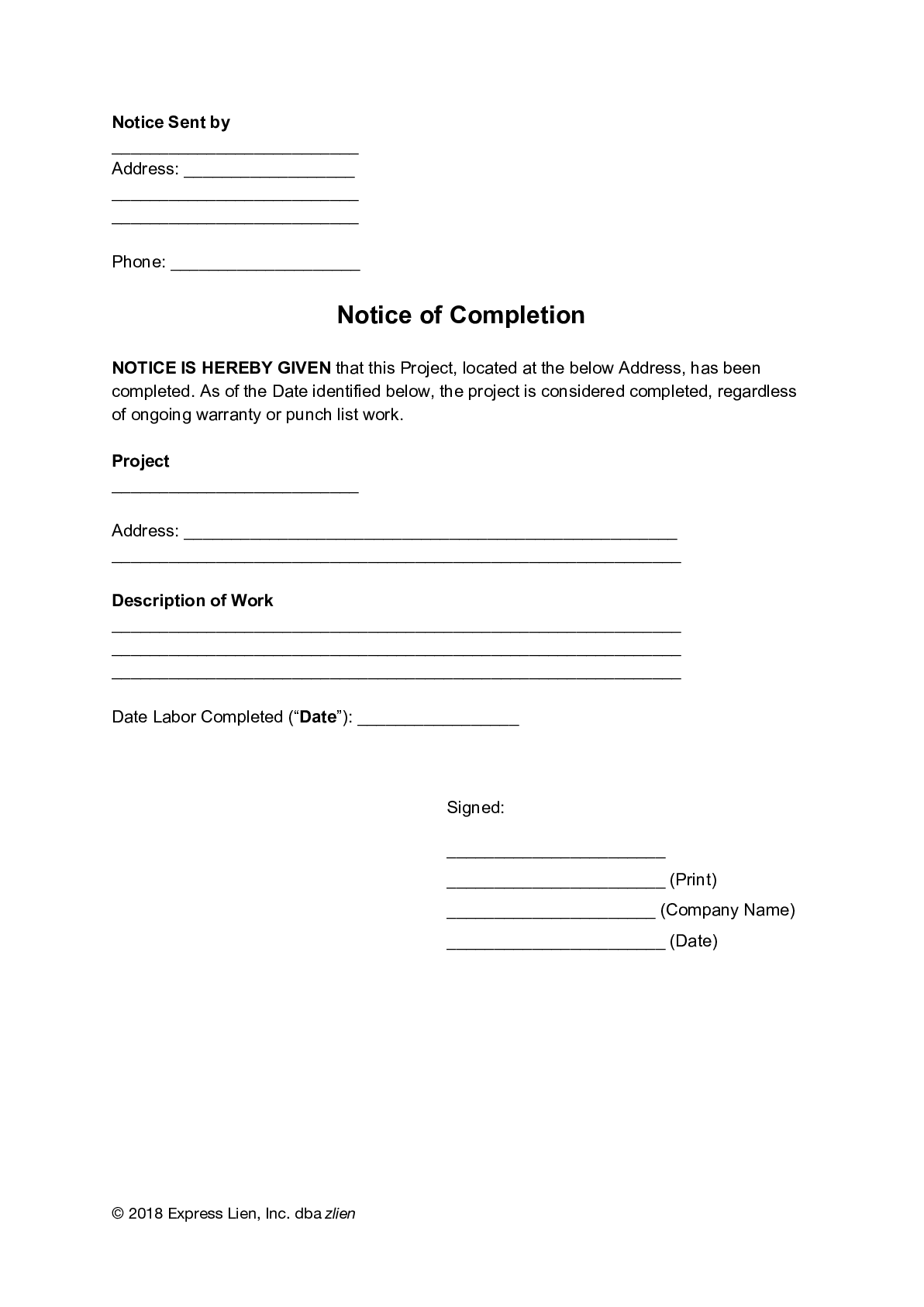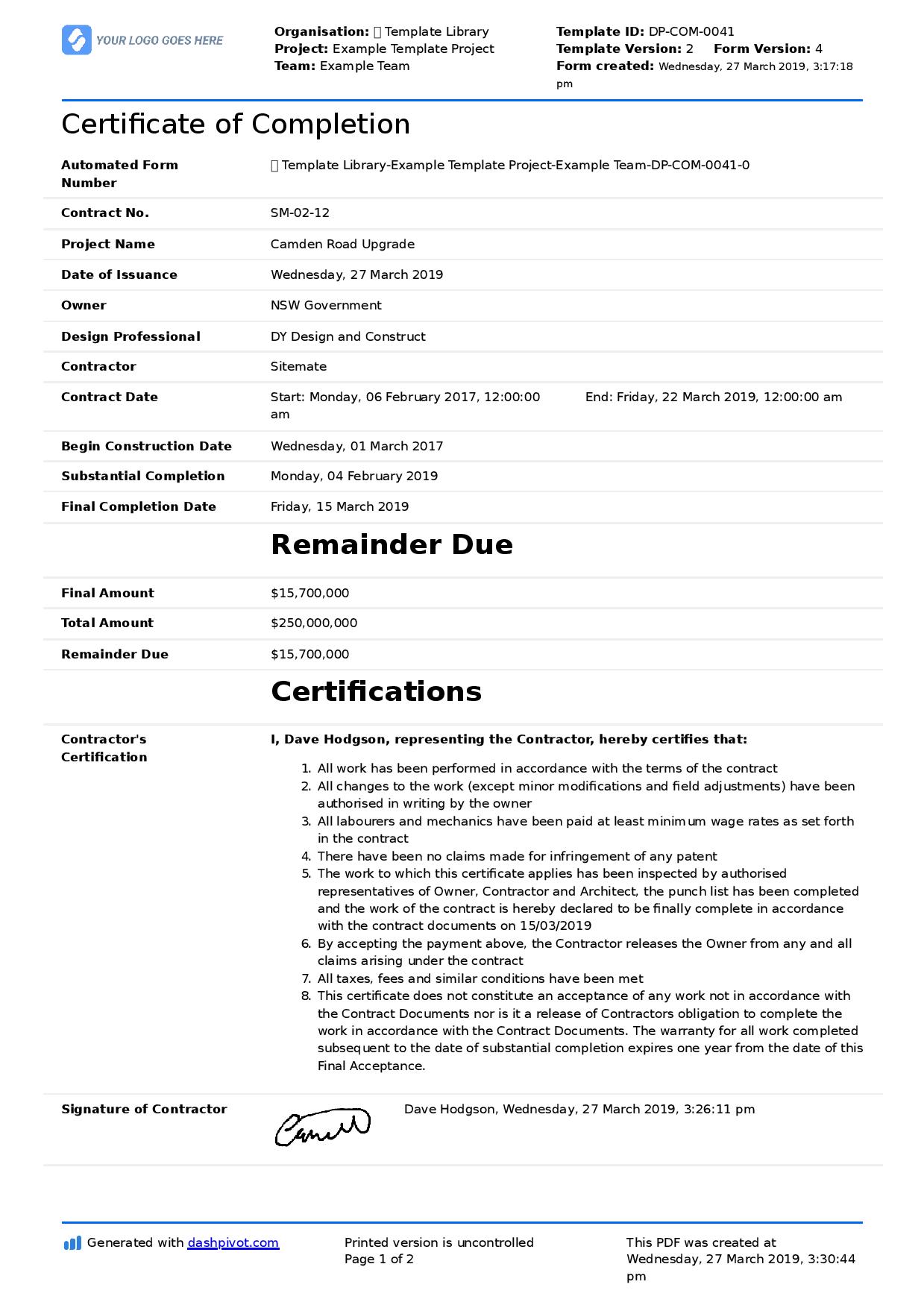Work Completion Letter for construction: A Comprehensive Guide
A work completion letter in construction signifies the successful culmination of a project, marking the transition from active construction to the warranty period and final settlement of accounts. It’s a crucial document for all stakeholders involved, including the contractor, the client, and any subcontractors. This comprehensive guide delves into the intricacies of work completion letters, outlining their purpose, essential components, the process of issuance, and Potential disputes.
What is a Work Completion Letter?
A work completion letter, also known as a certificate of completion or project completion letter, is a formal document issued by the contractor to the client, certifying that the construction work outlined in the contract has been substantially completed. It serves as an official confirmation that the project has reached a stage where it can be occupied and used for its intended purpose, even if minor finishing touches or punch list items remain.
Why is a Work Completion Letter Important?

The work completion letter holds significant importance for several reasons:
Triggers Final Payment: It often triggers the release of the final payment or retention money held by the client, signifying the contractor’s entitlement to the remaining balance.
Essential Components of a Work Completion Letter
A well-drafted work completion letter should include the following essential components:
Project Name and Location: Clearly state the name and address of the construction project.

The Process of Issuing a Work Completion Letter
The process of issuing a work completion letter typically involves the following steps:
1. Contractor’s Assessment: The contractor assesses the project to determine if the work has been substantially completed according to the contract specifications.
2. Punch List Development: The contractor identifies any remaining minor tasks or defects and compiles a punch list.
3. Notification to Client: The contractor notifies the client of the impending completion and schedules a joint inspection.
4. Joint Inspection: The client and the contractor conduct a joint inspection to review the completed work and agree on the punch list.
5. Issuance of Completion Letter: The contractor issues the formal work completion letter, including the agreed-upon punch list.
6. Client Acceptance: The client reviews the completion letter and, if satisfied, formally accepts it, often by signing and returning a copy.
Handling Disputes Related to Work Completion
Disputes regarding work completion can arise due to various reasons, such as disagreements over the definition of substantial completion, the extent of the punch list, or the quality of the work. It’s crucial to have a clear dispute resolution mechanism outlined in the contract. Common approaches include:
Negotiation: The parties attempt to resolve the dispute through direct communication and negotiation.
Importance of Legal Counsel
It’s highly recommended that both contractors and clients seek legal counsel when dealing with work completion letters, especially in complex projects. A lawyer can review the contract, advise on the legal implications of the completion letter, and assist in resolving any disputes that may arise.
Best Practices for Work Completion Letters
Clear and Concise Language: Use clear and concise language, avoiding ambiguities and technical jargon.
Conclusion
The work completion letter is a critical document in the construction process, marking the successful completion of a project and triggering important contractual obligations. By understanding its purpose, essential components, and the process of issuance, both contractors and clients can ensure a smooth and successful project closeout. Properly executed and clearly documented, the work completion letter serves as a valuable tool for protecting the interests of all parties involved and facilitating a positive transition from construction to occupancy.
work completion letter for construction
